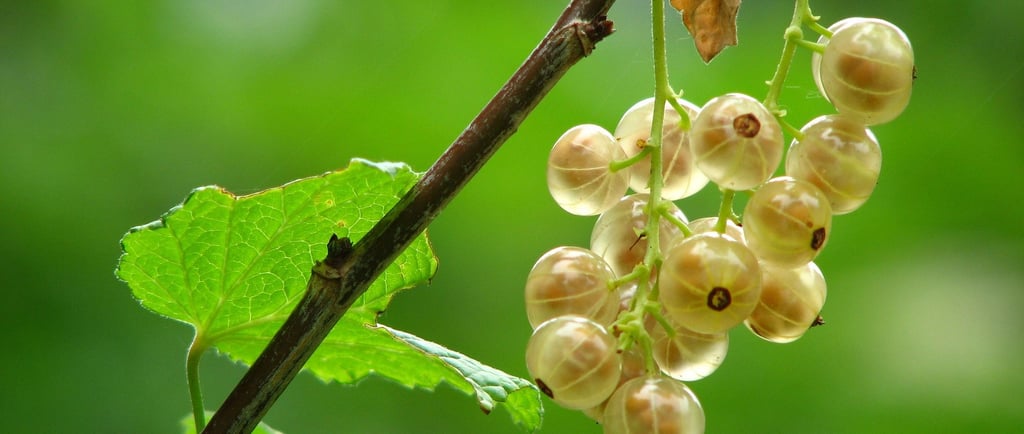🍈✨ The Juicy Jewels of the Garden: Currants ✨🍈
🍈✨ A story that branches directly from Chapter: The Fruit in the Biology Album. It invites the children to look more closely at the lesser-known treasures hiding in gardens. Revisiting what makes a fruit true berry, and discovering surprising plant relationships—like how currants are cousins to tomatoes and grapes. Currents opens another door to explore the quiet ways in which fruits nourish not only humans but birds, bugs, and the entire garden ecosystem. 🌿🦋 This story encourages careful observation and wonder, deepening children’s understanding of botanical classification and sparking questions like: 💭 “What makes a berry a real berry?"
BIOLOGY STORIES
7/23/20252 min read


In the quiet corners of a summer garden, where bees hum 🐝 and leaves sway 🍃, where spiders spin 🕸️ and ants run 🐜, a treasure hides between green leaves. Look closer… 👀
There they are—tiny globes of red like rubies, golden like morning sun, or dusky black like midnight. Currants! 🔴🟡⚫ Dangling in cheerful clusters, nestled among lobed green leaves, they gleam like jewels waiting to be discovered. 💎🌿 Children call them nature’s candies—not too sweet, not too sour, just the perfect little burst of garden magic. 🍬✨
Currants don’t shout for attention like other fruits in the garden. ☀️They grow on small shrubs in cooler climates, away from the Equator. Generously offering themselves to birds 🐦, bugs 🐞, and berry-loving fingers 🧒👦.
☀️They grow on shrubs in cooler climates, away from the Equator. From a delicate, small, and pretty little spring flowers—pale greenish-pink bells 🌼 that bees visit with care. And by midsummer, the bush is filled with edible treasure. 🧺
Unlike many fruits like strawberries, raspberries, or blackberries—which are called berries in everyday language but are not true berries in science—currants are the real deal. Just like tomatoes 🍅 and grapes 🍇, currants develop from a single ovary and contain seeds surrounded by juicy flesh. That’s what makes them true berries in botanical classification! 🌱🔍 Some currants are even translucent, , glowing in the sun. If you look closely you can spot their seeds.
📜 And the name “currant”, is a name that stuck on the wrong fruit. In ancient Greece there was a city called Corinth! 🏛️ Long ago, traders brought dried grapes from Corinth called “raisins of Corinth,” and over time, people shortened that to just currants. Later on, traders began using the same name for these juicy garden berries—even though they aren’t raisins at all! 🍇😄 The name stuck… and stayed forever.
People have long loved this juicy treasure. Currants—especially blackcurrants, bursting with vitamin C 💪—became known as tiny health heroes from the garden. Long ago, sailors ⛵ packed them not just as a sweet treat, but as medicine, a natural shield against illness during long voyages. Even today, currant syrup warms hands and hearts in steaming cups 🍵💖, and currant jelly remains one of the brightest stars on the jam shelf—loved for its rich color and bold, tangy flavor.
So now you know: currants are not only delicious—they’re true berries, hiding their secrets in a shady corner of the garden. 🌿
I wonder...What other true berries might be growing in your garden, your forest, your neighborhood?
Do they hang in clusters? Are they juicy? Do they grow from a single ovary?
You could collect some currants and make your own jam—watching their jewel tones melt into something sweet and tart. 🍓🍯 Or build a “berry chart” to sort the true berries from the imposters. Grapes? Tomatoes? Strawberries? 🤔
With Montessori joy,
Vanina 😊

